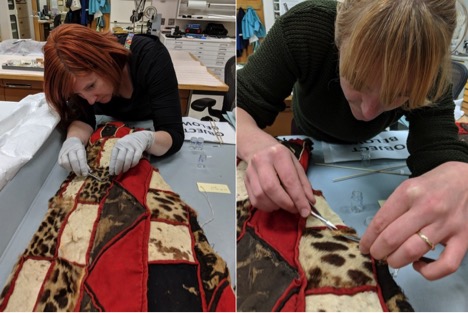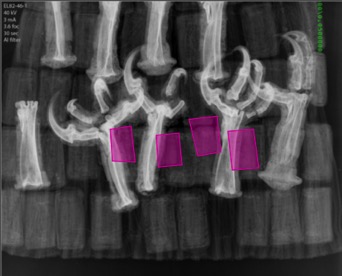Speakers:
- Janelle Batkin-Hall, Andrew W. Mellon Objects Conservation Fellow at the National Museum of African Art, Smithsonian Institution
- Julia Campbell-Such, Andrew W. Mellon Objects Conservation Fellow at the National Museum of African Art, Smithsonian Institution

As conservators, we share the privilege of working with and handling objects that bear special meaning to their makers, users, and collectors. In certain instances, these meanings extend to the histories that the objects represent and the narratives they inspire. Batkin-Hall and Campbell-Such discussed one such example, a Loma Leopard-fur ceremonial costume, on a long-term loan from the Government of Liberia to the National Museum of African Art, Smithsonian Institution. Describing the history of the ensemble, which includes a hat, tunic, and pants, Batkin-Hall and Campbell-Such explain that the costume was first loaned to the Smithsonian Institution by the Liberian government owing to uncertainty surrounding its ability to care for it, a circumstance that was further worsened with the First and Second Liberian Civil Wars from 1989 – 1997 and 1999 – 2003, respectively. One of many unfortunate consequences of the conflict was the loss and looting of cultural artifacts in the country. Today, the costume is thought to be one of few such ensembles extant in the world. Batkin-Hall and Campbell-Such’s presentation illustrates effectively how the work of conservators can be involved in cultural stewardship across borders.
Batkin-Hall and Campbell-Such shared that the costume is made of materials including cotton and wool cloth, leather, eagle talons, leopard fur and another hide thought to be antelope fur. The costume is adorned with leather-covered amulets that contain paper talismans with Arabic inscriptions, relating to its ceremonial functions. The costume was previously treated in 2007, in preparation for an exhibition entitled “Inscribing Meaning” presented by the National Museum of African Art and the Fowler Museum at UCLA in 2007-2008. The recent reopening of the National Museum of Liberia in November 2017 prompted questions regarding the possibility of the costume’s return, leading to the present examination and treatment. Using a combination of visual examination and other techniques such as polarized light microscopy for fiber analysis, X-radiography, and infrared reflectography, Batkin-Hall and Campbell-Such have been able to better characterize some of the materials used in the costume. Amongst other findings, they report the possible presence of goat hair in areas previously identified as antelope fur, as well as the location of four additional amulets visible in X-radiography that were not previously documented. As the project progresses, they are also looking at the use of alternative materials for repairing/backing tears. Their treatment recommendations will be guided by the final destination of the costume.

Summarized by Soon Kai Poh, Graduate Intern at the Freer Gallery of Art and Arthur M. Sackler Gallery, Smithsonian Institution, and Fourth-Year Graduate Student, Conservation Center, Institute of Fine Arts, NYU